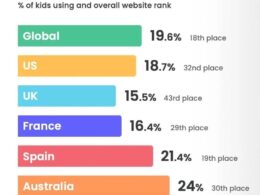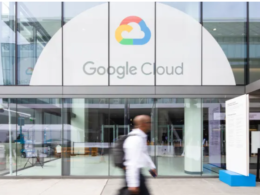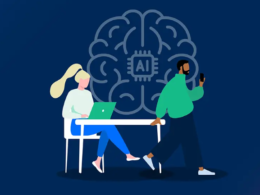the health strategist
multidisciplinary institute
Joaquim Cardoso MSc.
Chief Research and Strategy Officer (CRSO),
Chief Editor and Senior Advisor
August 25, 2023
What is the message?
The final part of the McKinsey study underscores the transformative potential of generative AI, emphasizing its capacity to reshape economies and work dynamics.
While acknowledging the significant value it can bring, the article also highlights the urgent need for stakeholders to address challenges, such as intellectual property concerns, content accuracy, bias, and workforce transitions.
It calls for a proactive, collaborative approach among companies, policymakers, and individuals to harness generative AI’s benefits while responsibly mitigating its potential disruptions.
Key takeaways:
- Reshaping Society through AI: Historical examples demonstrate how new technologies can reshape societies. Artificial Intelligence (AI), including generative AI, has already transformed various aspects of our lives, enhancing communication and optimizing business processes.
- Generative AI’s Potential: Generative AI is evolving rapidly and has the potential to bring significant positive impact. It is estimated to generate trillions of dollars in value annually and transform the nature of work by automating tasks, but its adoption also poses challenges.
- Addressing Challenges: Stakeholders need to act swiftly to address the opportunities and risks posed by generative AI. Challenges include concerns about intellectual property infringement, accuracy of generated content, fairness and bias, and economic workforce transitions.
- Economic Transformations: The potential workforce transitions due to generative AI are substantial. A significant portion of work activities could change within a decade, requiring effective management of positive and negative impacts.
- Corporate Responsibility: Companies must balance capturing value with managing risks associated with generative AI. They should consider the changing mix of skills and occupations and transparently share experiences and insights to help guide responsible adoption.
- Policy-Making Implications: Policymakers should anticipate shifts in the workforce landscape and design retraining programs and incentives to support individuals and private companies during the transition. Policies must also prevent harmful uses of generative AI and prioritize human-centric development.
- Individual Impact: Individuals as workers, consumers, and citizens should seek unbiased information about generative AI’s effects on their lives. They need to balance its conveniences with its workplace implications and participate in decisions shaping its integration.
- Technology’s Dual Nature: Generative AI’s rapid deployment brings both awe and concern. As it gains prominence, there is a need to understand its potential for positive economic impact and its potential to disrupt lives and society.
- Long-Term Understanding: Society is at the beginning of understanding generative AI’s power and implications. It’s expected that the coming years will bring rapid innovation and transformative changes, necessitating adaptation and reskilling.
- Balancing Value and Disruption: Generative AI can drive economic growth while potentially causing destabilization. It possesses the power of language, capable of both enhancing human abilities and causing harm. Balancing value creation with societal stability is essential.
- Collaborative Approach: Collaboration between companies, policymakers, consumers, and citizens is crucial to ensure that generative AI delivers value while minimizing negative impacts. Immediate action is necessary to manage its effects effectively.
DEEP DIVE

Considerations for business and society [Generative AI Reports: MGI 2023 – Part 4]
This is an excerpt of the report “The state of AI in 2023: Generative AI’s breakout year”, published by MGI (McKinsey Global Institute), authored by Michael Chui, Lareina Yee; Bryce Hall, Alex Singla and Alexander Sukharevsky, an issued on August, 2023.
MGI
Michael Chui, Eric Hazan, Roger Roberts, Alex Singla, Kate Smaje, Alex Sukharevsky, Lareina Yee, and Rodney Zemmel
June 14, 2023
History has shown that new technologies have the potential to reshape societies. Artificial intelligence has already changed the way we live and work—for example, it can help our phones (mostly) understand what we say, or draft emails. Mostly, however, AI has remained behind the scenes, optimizing business processes or making recommendations about the next product to buy. The rapid development of generative AI is likely to significantly augment the impact of AI overall, generating trillions of dollars of additional value each year and transforming the nature of work.
But the technology could also deliver new and significant challenges. Stakeholders must act—and quickly, given the pace at which generative AI could be adopted—to prepare to address both the opportunities and the risks. Risks have already surfaced, including concerns about the content that generative AI systems produce: Will they infringe upon intellectual property due to “plagiarism” in the training data used to create foundation models? Will the answers that LLMs produce when questioned be accurate, and can they be explained? Will the content generative AI creates be fair or biased in ways that users do not want by, say, producing content that reflects harmful stereotypes?
There are economic challenges too: the scale and the scope of the workforce transitions described in this report are considerable. In the midpoint adoption scenario, about a quarter to a third of work activities could change in the coming decade. The task before us is to manage the potential positives and negatives of the technology simultaneously (see sidebar “Using generative AI responsibly”). Here are some of the critical questions we will need to address while balancing our enthusiasm for the potential benefits of the technology with the new challenges it can introduce.
Companies and business leaders
How can companies move quickly to capture the potential value at stake highlighted in this report, while managing the risks that generative AI presents?
How will the mix of occupations and skills needed across a company’s workforce be transformed by generative AI and other artificial intelligence over the coming years? How will a company enable these transitions in its hiring plans, retraining programs, and other aspects of human resources?
Do companies have a role to play in ensuring the technology is not deployed in “negative use cases” that could harm society?
How can businesses transparently share their experiences with scaling the use of generative AI within and across industries—and also with governments and society?
Policy makers
What will the future of work look like at the level of an economy in terms of occupations and skills? What does this mean for workforce planning?
How can workers be supported as their activities shift over time? What retraining programs can be put in place? What incentives are needed to support private companies as they invest in human capital? Are there earn-while-you-learn programs such as apprenticeships that could enable people to retrain while continuing to support themselves and their families?
What steps can policy makers take to prevent generative AI from being used in ways that harm society or vulnerable populations?
Can new policies be developed and existing policies amended to ensure human-centric AI development and deployment that includes human oversight and diverse perspectives and accounts for societal values?
Individuals as workers, consumers, and citizens
How concerned should individuals be about the advent of generative AI? While companies can assess how the technology will affect their bottom lines, where can citizens turn for accurate, unbiased information about how it will affect their lives and livelihoods?
How can individuals as workers and consumers balance the conveniences generative AI delivers with its impact in their workplaces?
Can citizens have a voice in the decisions that will shape the deployment and integration of generative AI into the fabric of their lives?
Technological innovation can inspire equal parts awe and concern. When that innovation seems to materialize fully formed and becomes widespread seemingly overnight, both responses can be amplified. The arrival of generative AI in the fall of 2022 was the most recent example of this phenomenon, due to its unexpectedly rapid adoption as well as the ensuing scramble among companies and consumers to deploy, integrate, and play with it.
All of us are at the beginning of a journey to understand this technology’s power, reach, and capabilities. If the past eight months are any guide, the next several years will take us on a roller-coaster ride featuring fast-paced innovation and technological breakthroughs that force us to recalibrate our understanding of AI’s impact on our work and our lives. It is important to properly understand this phenomenon and anticipate its impact. Given the speed of generative AI’s deployment so far, the need to accelerate digital transformation and reskill labor forces is great.
These tools have the potential to create enormous value for the global economy at a time when it is pondering the huge costs of adapting and mitigating climate change. At the same time, they also have the potential to be more destabilizing than previous generations of artificial intelligence. They are capable of that most human of abilities, language, which is a fundamental requirement of most work activities linked to expertise and knowledge as well as a skill that can be used to hurt feelings, create misunderstandings, obscure truth, and incite violence and even wars.
We hope this research has contributed to a better understanding of generative AI’s capacity to add value to company operations and fuel economic growth and prosperity as well as its potential to dramatically transform how we work and our purpose in society. Companies, policy makers, consumers, and citizens can work together to ensure that generative AI delivers on its promise to create significant value while limiting its potential to upset lives and livelihoods. The time to act is now.
About the Authors
Michael Chui is a partner in McKinsey’s Bay Area office
Roger Roberts is a partner
Lareina Yee is a senior partner
Eric Hazan is a senior partner in McKinsey’s Paris office
Alex Singla is a senior partner in the Chicago office
Kate Smaje and Alex Sukharevsky are senior partners in the London office
Rodney Zemmel is a senior partner in the New York office
Originally published at https://www.mckinsey.com/capabilities/mckinsey-digital












